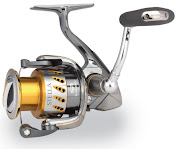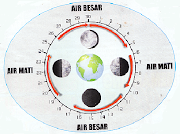Every angler is interested in catching larger fish. To become a successful angler, developing a basic understanding of the fish is important. Anglers also need to know the best feeding time for the target fish which is typically at dusk and dawn. There is an extremely large number of different species of fish that are sought after in both fresh-water and salt-water. However, each species has certain specific habits and diets that requires specific knowledge and individual study in order to understand their feeding tendencies.
First and perhaps most important to putting together the puzzle is a good understanding of the individual species being pursued. Most game fish species are carnivores and will eat a wide variety of foods, but quite frequently they feed on other smaller fish. Fish are opportunistic feeders and will feed when hungry and food is readily available. However when full they may totally ignore the food source.
The quest to determine the best times to fish is not a recent project. For hundreds of years people recognized that there were certain times when fishes were more abundant. People who base their existence on the ocean or lakes have long understood that sun and moon influences help to determine the best times for fishing.
What is generally known and almost universally accepted is that fish are more active at certain times of the day, most noticeably at dawn and dusk. It is also generally agreed that many game species are more active during certain phases of the moon as well as when the moon is in certain positions in the sky each day. All of these influences have an individual effect that can be observed and in some instances measured.
What determines why one specific day is a better day to fish than another and why we are more likely to find fish feeding at certain times of the day? Virtually all wildlife repeats certain activities each and every day. All fish and animals must eat and rest to sustain life. The movement necessary to accomplish these basic needs is what provides all of us with the opportunity to catch more fish.
Our ability to understand how these solar and lunar influences affect feeding activity has made fishing more predictable. During each day the sun and moon exert their individual influence on each and every hour. Each hour and day will have a different combination of these influences. Understanding the affects of the sun and moon on wildlife is only one part of the complex puzzle that helps predict when fish are most active.
Solar Influence - the primary solar periods that are factored in Weather and Wildlife charts are dawn, dusk, midday and midnight. Each of these periods is determined based on the exact time of sunrise and sunset for that specific location and date. The sun has its greatest influence when it is at its zenith or most directly overhead. That point occurs around June 21st each year in the northern hemisphere while for the equinox in September.
Lunar Influence - the most obvious and measurable affects of the moon on the earth are seen with tides. The gravitational force of the moon is one of the primary influences in the rise and fall of tides. The periods of greatest lunar influence on wildlife are when the moon is most directly overhead and then again when it is opposite side of the earth. These two positions are usually referred to as “major or excellent" activity periods. Minor feeding times follow the major times by approximately 6 hours. The moon phase has also been shown to indicate certain heightened periods of activity.
Understanding the impact of weather on the individual species of fish you are pursuing as well as other factors including depth, water temperature and clarity are also important factors in your success. There is a great deal of information available on the Internet for people who want to learn about the anatomy, habits, diet, reproduction and many other facts about various game fish.
Thursday, February 10, 2011
Subscribe to:
Post Comments (Atom)




















No comments:
Post a Comment